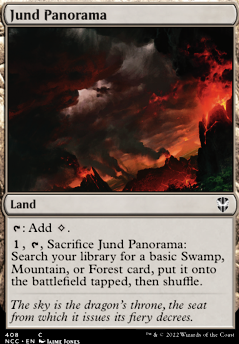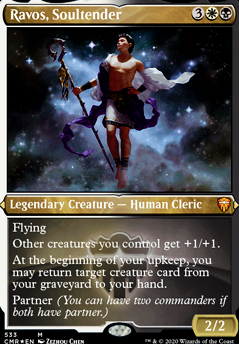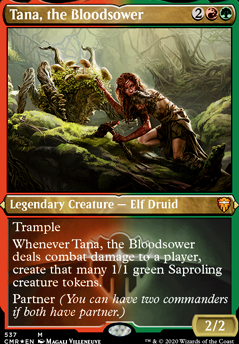Life From Land (29)
- 1x Boros Garrison SL
- 1x Command Tower
- 1x Evolving Wilds
- 4x Forest
- 1x Golgari Rot Farm
- 1x Gruul Turf
- 1x Jund Panorama
- 1x Jungle Shrine
- 2x Mountain
- 1x Nomad Outpost
- 1x Orzhov Basilica
- 3x Plains
- 1x Rakdos Carnarium
- 1x Rupture Spire
- 1x Sandsteppe Citadel
- 1x Savage Lands
- 1x Selesnya Sanctuary
- 4x Swamp
- 1x Terramorphic Expanse
- 1x Transguild Promenade
Rot and Ruin (12)
- 1x Attrition
- 1x Fumigate
- 1x Hull Breach
- 1x Krosan Grip
- 1x Magus of the Abyss
- 1x Mortify
- 1x Nullmage Shepherd
- 1x Putrefy
- 1x Qasali Pridemage
- 1x Reclamation Sage
- 1x World Queller
- 1x Wrath of God
Fuel From Steel (6)
Life From Death (16)
- 1x Abzan Ascendancy
- 1x Blisterpod
- 1x Custodi Soulbinders
- 1x Den Protector
- 1x Doomed Traveler
- 1x Eternal Witness
- 1x Golgari Germination
- 1x Mausoleum Guard
- 1x Meren of Clan Nel Toth
- 1x Mogg War Marshal
- 1x Penumbra Spider
- 1x Requiem Angel
- 1x Reveillark
- 1x Sek'Kuar, Deathkeeper
- 1x Sifter of Skulls
- 1x Sprouting Thrinax
Power From Blood (16)
- 1x Algae Gharial
- 1x Ayli, Eternal Pilgrim
- 1x Blade of the Bloodchief
- 1x Blood Artist
- 1x Deathbringer Thoctar
- 1x Deathgreeter
- 1x Fanatical Devotion
- 1x Goblin Sharpshooter
- 1x Moriok Replica
- 1x Mudbutton Torchrunner
- 1x Smothering Abomination
- 1x Solemn Simulacrum
- 1x Sylvok Replica
- 1x Thoughtpicker Witch
- 1x Viridian Emissary
- 1x Zulaport Cutthroat
Many From One (3)
Commanders (2)
Grand Cycle (9)
- 1x Basilisk Collar
- 1x Behemoth Sledge
- 1x Birds of Paradise
- 1x Harrow
- 1x Kodama's Reach
- 1x Lightning Greaves
- 1x Mycoloth
- 1x Scarland Thrinax
- 1x Sorin, Solemn Visitor
Might From Ground (7)
Suggestions
Updates Add
Comments
Attention! Complete Comment Tutorial! This annoying message will go away once you do!
Important! Formatting tips — Comment Tutorial — markdown syntax
Please login to comment
| Date added | 7 years |
| Last updated | 7 years |
| Legality | This deck is Commander / EDH legal. |
| Rarity (main - side) | 7 - 0 Mythic Rares 28 - 0 Rares 29 - 0 Uncommons 23 - 0 Commons |
| Cards | 100 |
| Avg. CMC | 3.14 |
| Tokens | Dragon 1/1 RG, Eldrazi Scion 1/1 C, Elemental X/X G, Emblem Sorin, Solemn Visitor, Experience Token, Goblin 1/1 R, Graveborn 3/1 BR, Kobolds of Kher Keep 0/1 R, Morph 2/2 C, Saproling 1/1 G, Spider 2/4 B, Spirit 1/1 W, Vampire 2/2 B |
| Votes | |
| Ignored suggestions | |
| Shared with | |
| Views |



